I have written about our encounters with Trinidad and Tobago’s incredible hummingbirds, both at the Asa Wright Nature Centre and at Yerette. This post is full of mind-blowing facts about these birds that we learned at both places. Particular thanks need to go to Theo Ferguson of Yerette for sharing his knowledge.
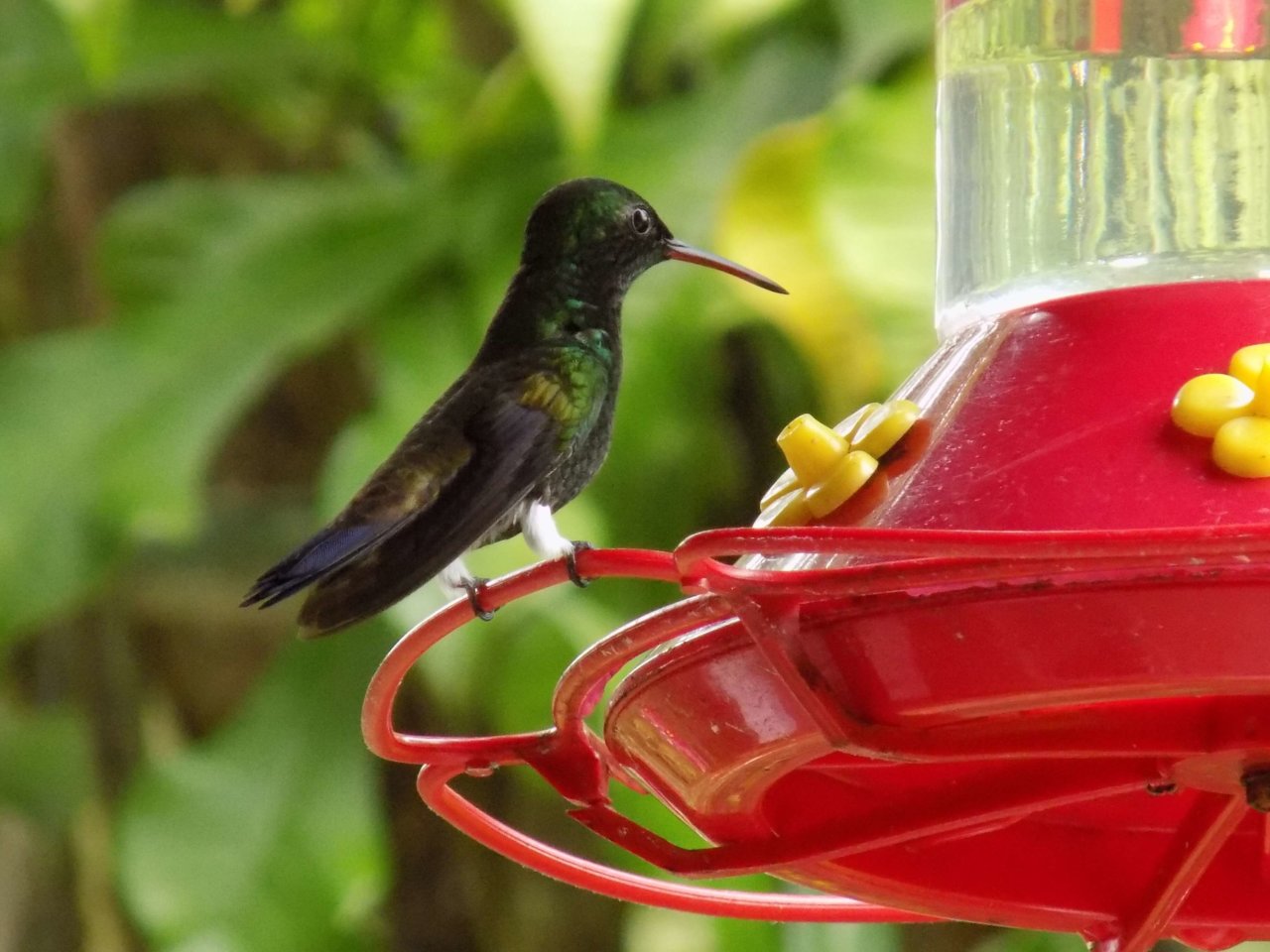
In this article
General Hummingbird Facts
- There are more than 300 species of hummingbirds in the world.
- Hummingbirds are only found in the Americas and neighbouring islands. At different times of the year, they can be found from Alaska in the north to Chile in the south.
- Hummingbirds get their name from the distinctive noise they make when they are flying. The hum is caused by their rapid wing movements. They can flap their wings up to 80 times per second, creating a whopping G-Force of 32 (pilots would black out at 8G!).
- It’s not just their wings that are fast. When feeding, hummingbirds can lick about 13 times a second to lap up nectar on the go.
- Hummingbirds are incredibly acrobatic. Unlike other birds, they can hover, fly backwards, fly sidewards, and fly upside-down.
- They are the fastest flying birds in the world in relation to their size. They fly at about 33 miles per hour during sustained flight and reach dive speeds of up to 60 miles per hour.
- Hummingbirds are also amongst the most aggressive birds in the world. They fight and compete for food and for territory all day long. During the mating season, male hummingbirds use their needle-like beaks to stab each other in the throat.
- Unlike some of their larger cousins, which can live for almost 100 years, hummingbirds only live about five years.
- The brain of a hummingbird is far larger than that of other birds in relation to body size, taking up about 4.2% of the bird’s total weight. Their sharp minds work with their exceptional eyesight to let them navigate safely. Studies have shown that hummingbirds can remember every flower they’ve ever visited, including on migration routes. They can work out how long to wait between visits so the flowers have time to generate more nectar. They can even recognise humans, and know which ones can be counted on to refill empty hummingbird feeders. By remembering their food source and the last time they visited it they can actually plan with some precision. This is known as episodic memory and was previously considered exclusive to humans.
- Flight-related muscles make up about 25 – 30% of a hummingbird’s total body weight, compared to about 15 percent of other birds’ weight.
- Hummingbirds typically eat two to three times their body weight every day and may feed as often as every 10 to 15 minutes. They live on a diet of insects and nectar.
- Hummingbirds have terrific vision. They can see every colour we can, and their eyes can process ultraviolet light, which means they can also see some colours we can’t. On top of that, hummingbirds are among the many animals gifted with a third set of eyelids. These translucent flaps of skin act like natural flight goggles, protecting the hummingbird’s eyes as it zooms through the air.
- Hummingbirds have highly acute hearing.
- A hummingbird has more feathers per inch than any other bird, with the possible exception of the penguin. Even if the penguin does win on feather count though, the hummingbird’s are far more colourful. They are naturally iridescent and change colour as the angle of the light changes. As a result, many consider hummingbirds to be the most beautiful birds on earth.
- Hummingbird nests are made largely of cobwebs and fine foliage and look incredibly scruffy. This is a deliberate ploy, however, to keep the eggs and fledgelings safe from predators.
- Hummingbird eggs are the approximate size and shape of a Tic-Tac!!
- The waste produced by hummingbirds, known in Trinidad as the ‘hummingbird blessing’, is clear, colourless, odourless and tasteless (Theo told us not to ask him how he knew that!!).
- Despite their small size, hummingbirds love the rain!! They shake their feathers at the same speed as they flap their wings, meaning that they are able to remain dry in the tropics.
- Hummingbirds spend an awful lot of their time preening and stretching.
Hummingbirds of Trinidad and Tobago
- There are 18 species of hummingbird found in Trinidad, 14 of which can be seen in the gardens at Yerette.
- Tobago has 6 species, 5 of them are also found in Trinidad, and one is unique to the smaller island.
- The Amerindians, the original inhabitants of Trinidad and Tobago, believed that hummingbirds contained the souls of their ancestors.
- Hummingbirds are the major pollinators in Trinidad and Tobago. They pollinate over 8000 species of flowering plants.
- The hummingbird is on the national coat of arms, the currency, and the passport of Trinidad and Tobago.
- It is the symbol of Caribbean Airlines and the country’s post office.
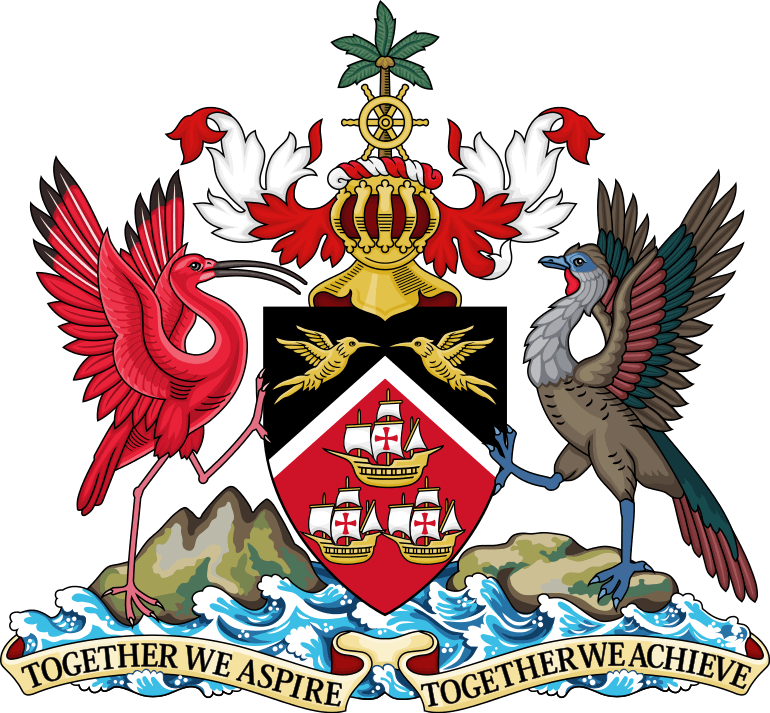
THESE ARE THE 14 SPECIES FOUND AT YERETTE:
Copper-rumped Hummingbird (Amazilia tobaci)
This is the most common and the most aggressive of the species found in Trinidad and Tobago. It has distinctive white socks on its legs.
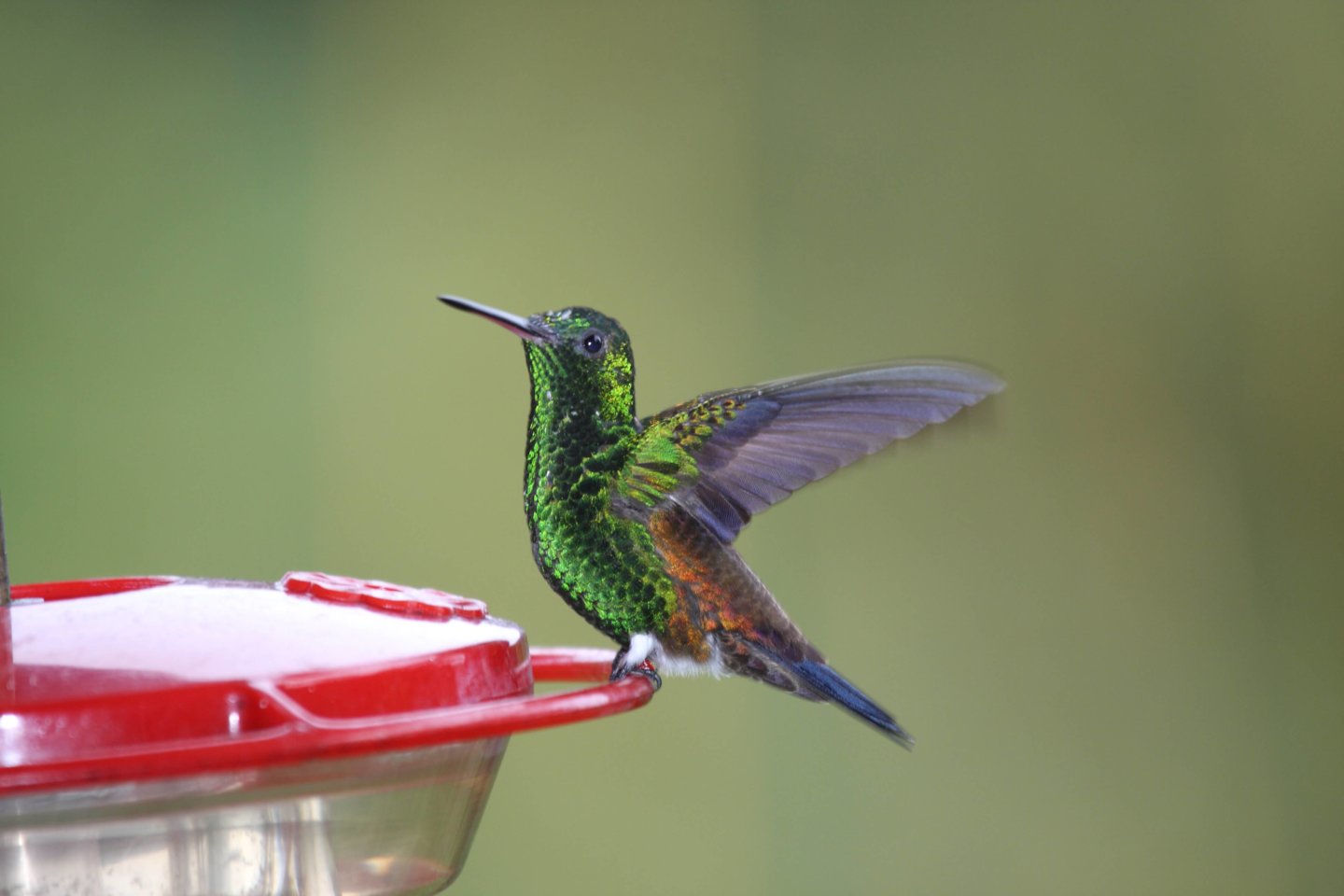
White-necked Jacobin (Florisuga mellivora)
One of the larger Trinidad and Tobago hummingbirds.
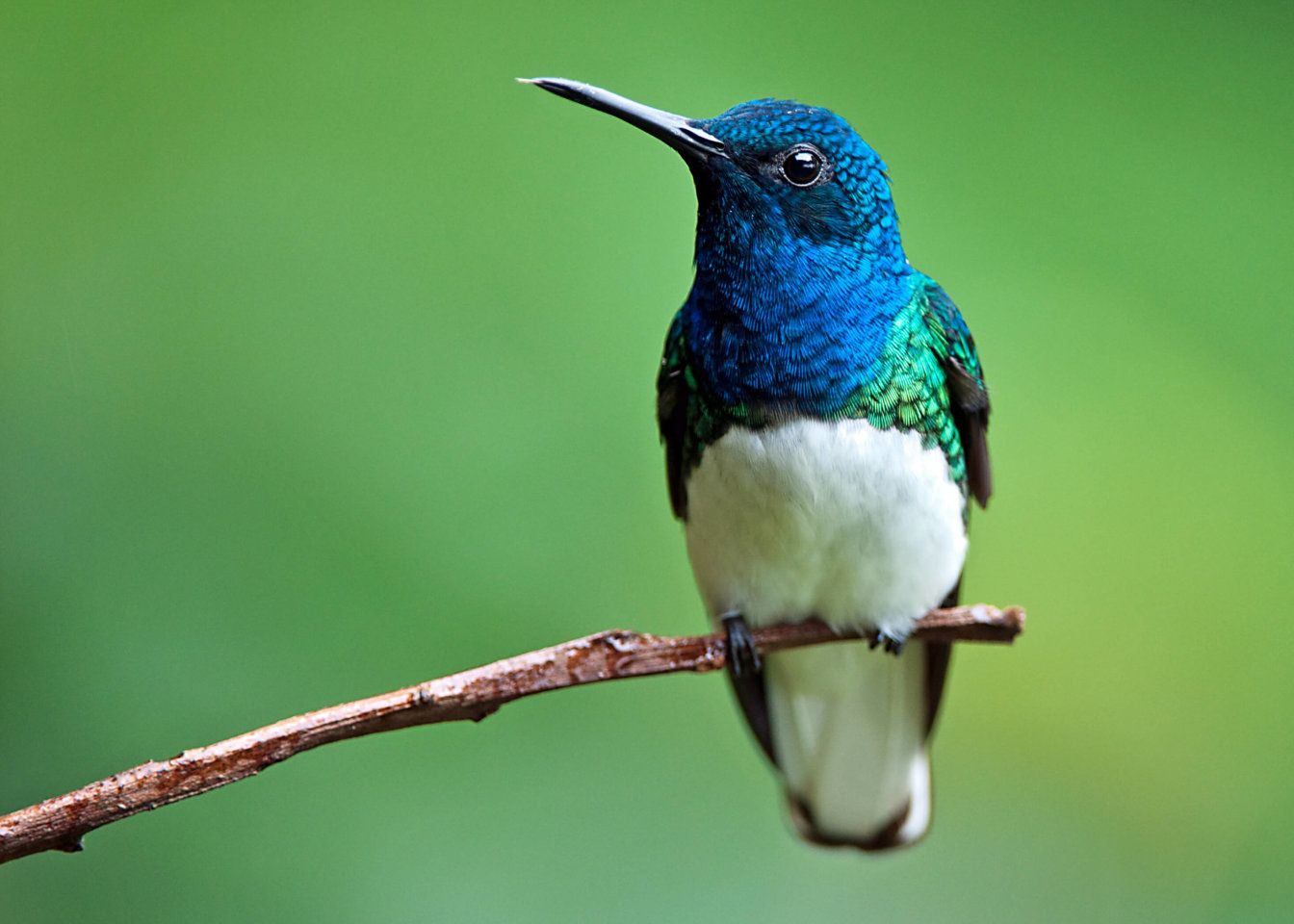
White-chested Emerald (Amazilia brevirostris)
A relatively small hummingbird.
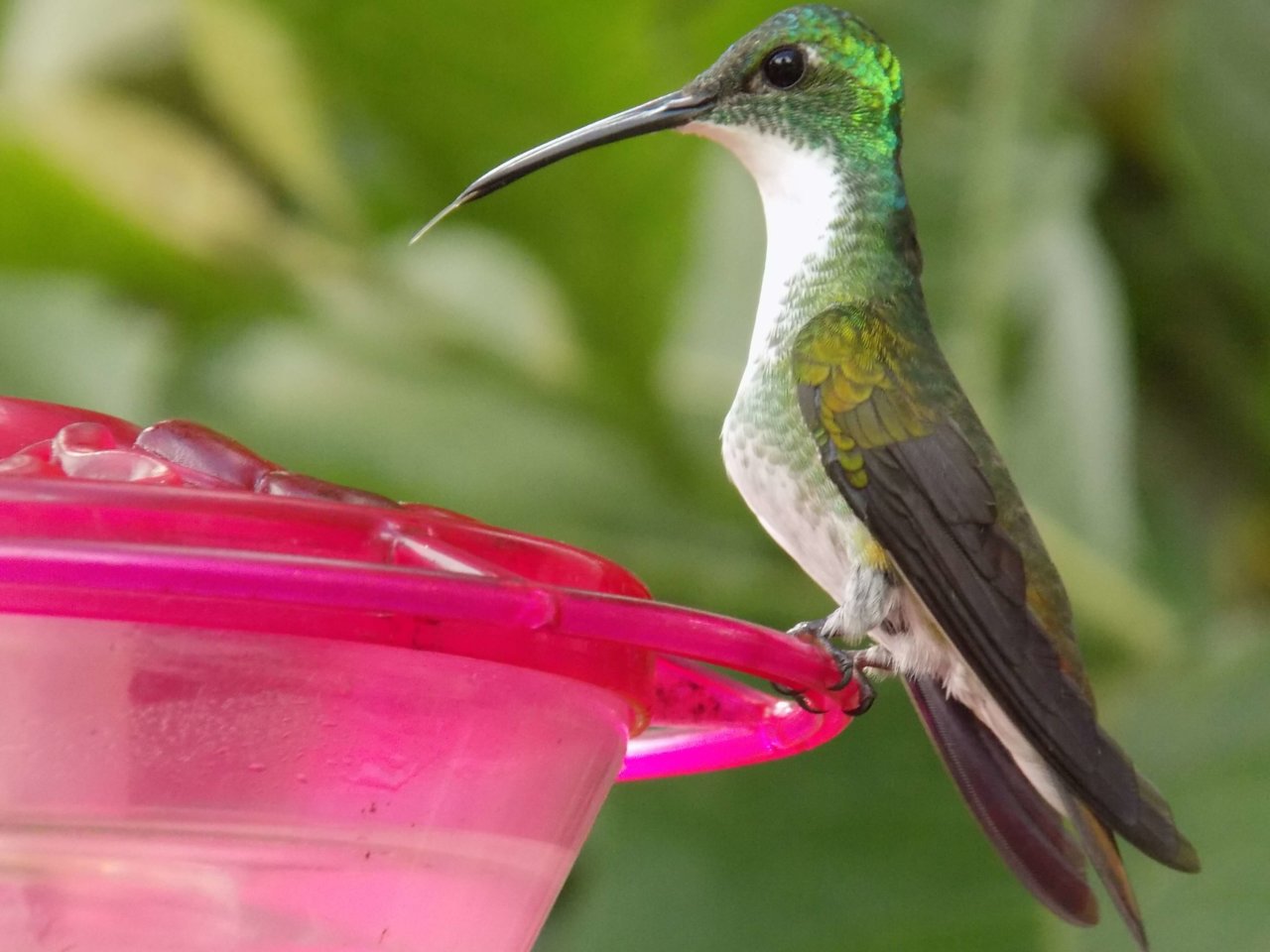
Long-billed Starthroat (Heliomaster longirostris)
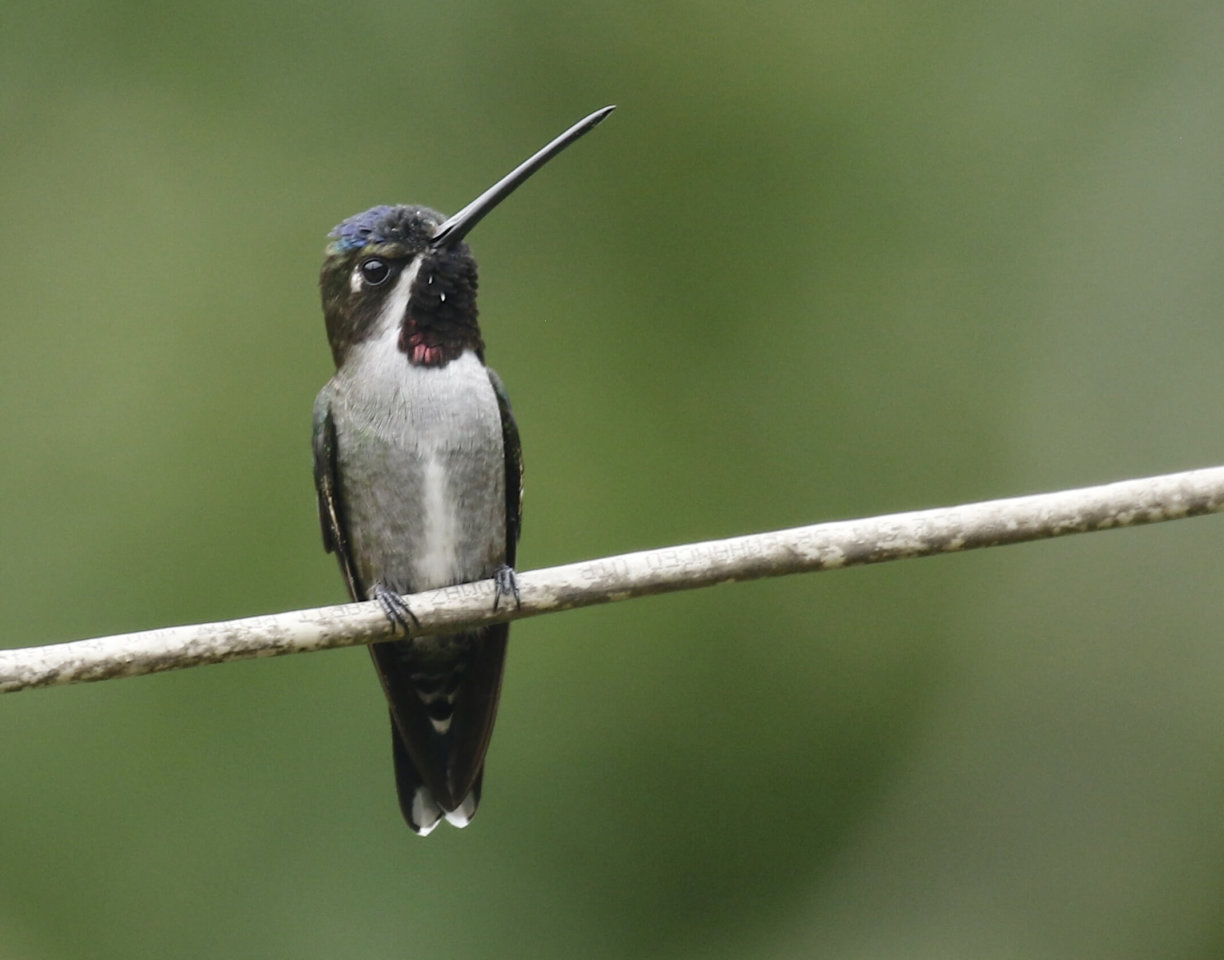
Black-throated Mango (Anthracothorax nigricollis)
One of the larger species found in Trinidad and Tobago.
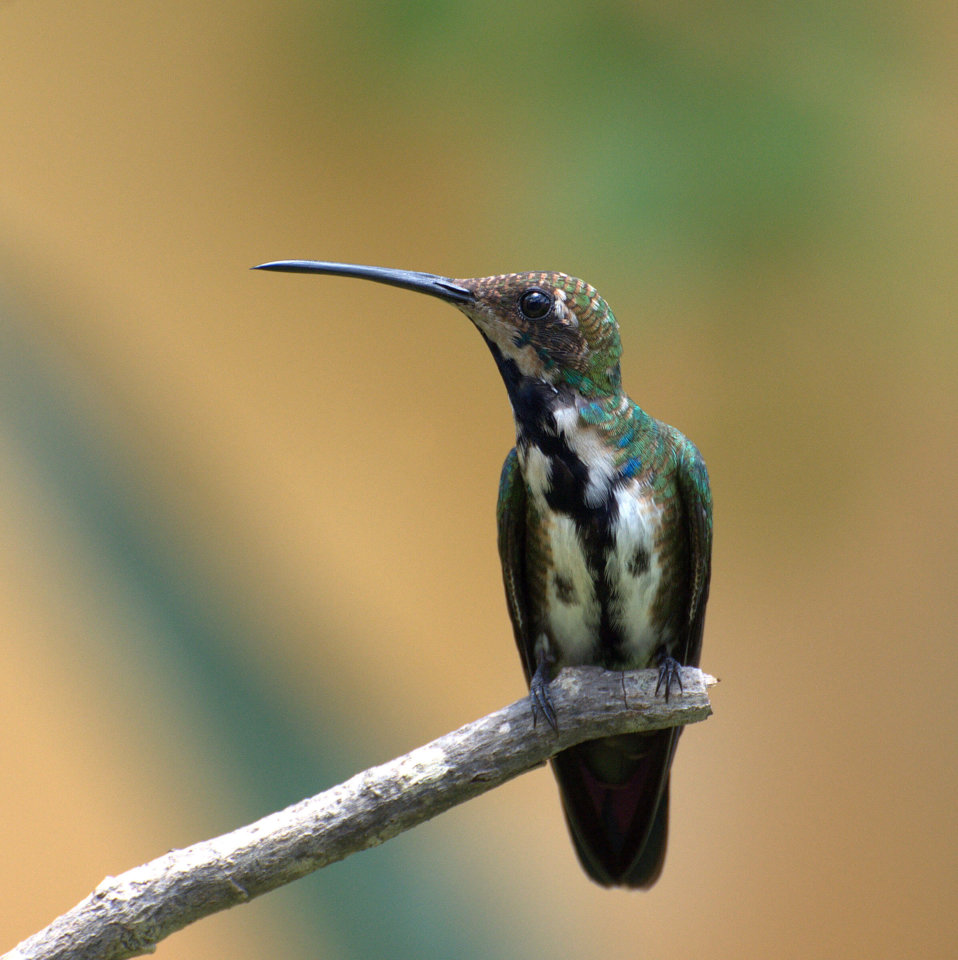
Green-throated Mango (Anthracothorax viridigula)
The largest Trinidad and Tobago hummingbird in terms of weight.
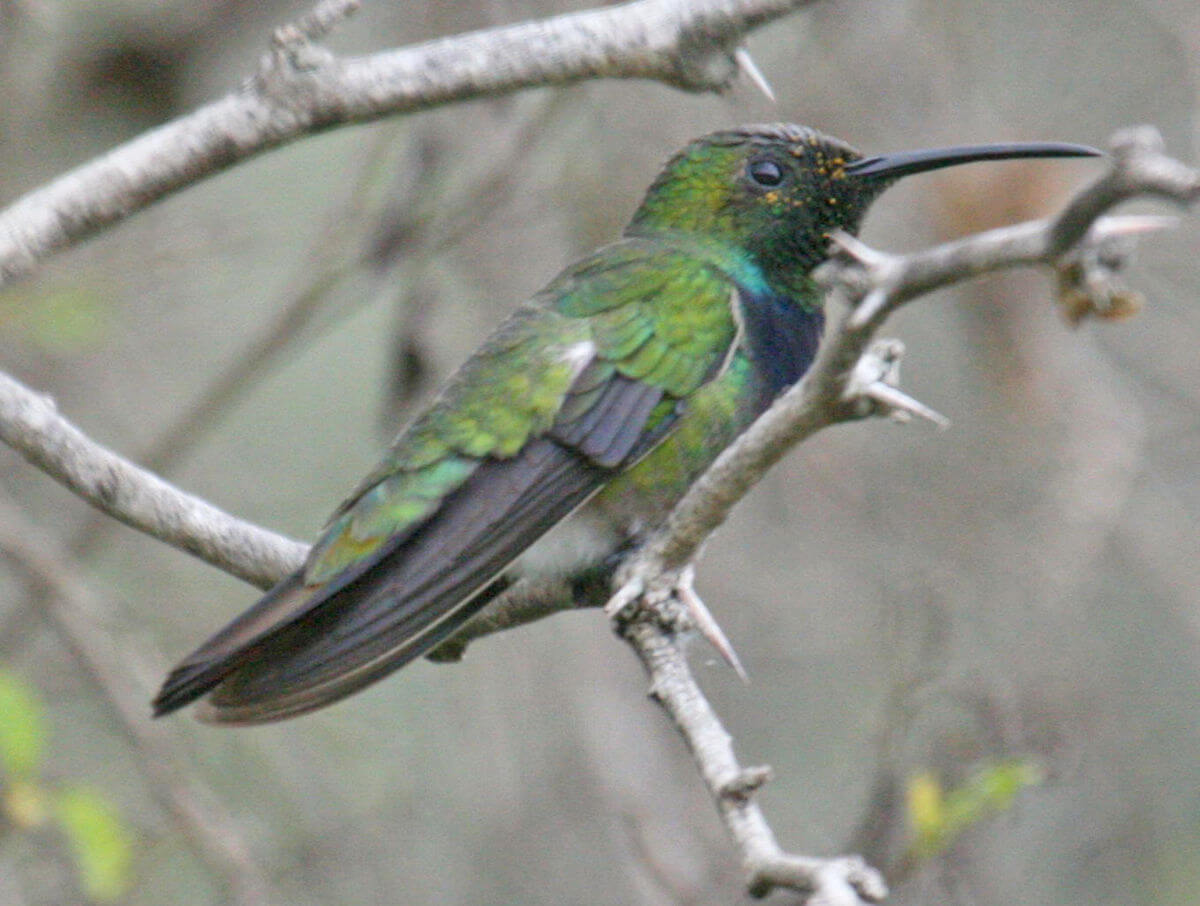
Brown Violetear (Colibri delphinae)
One of the rarer Trinidad and Tobago hummingbirds, found only at higher altitudes.
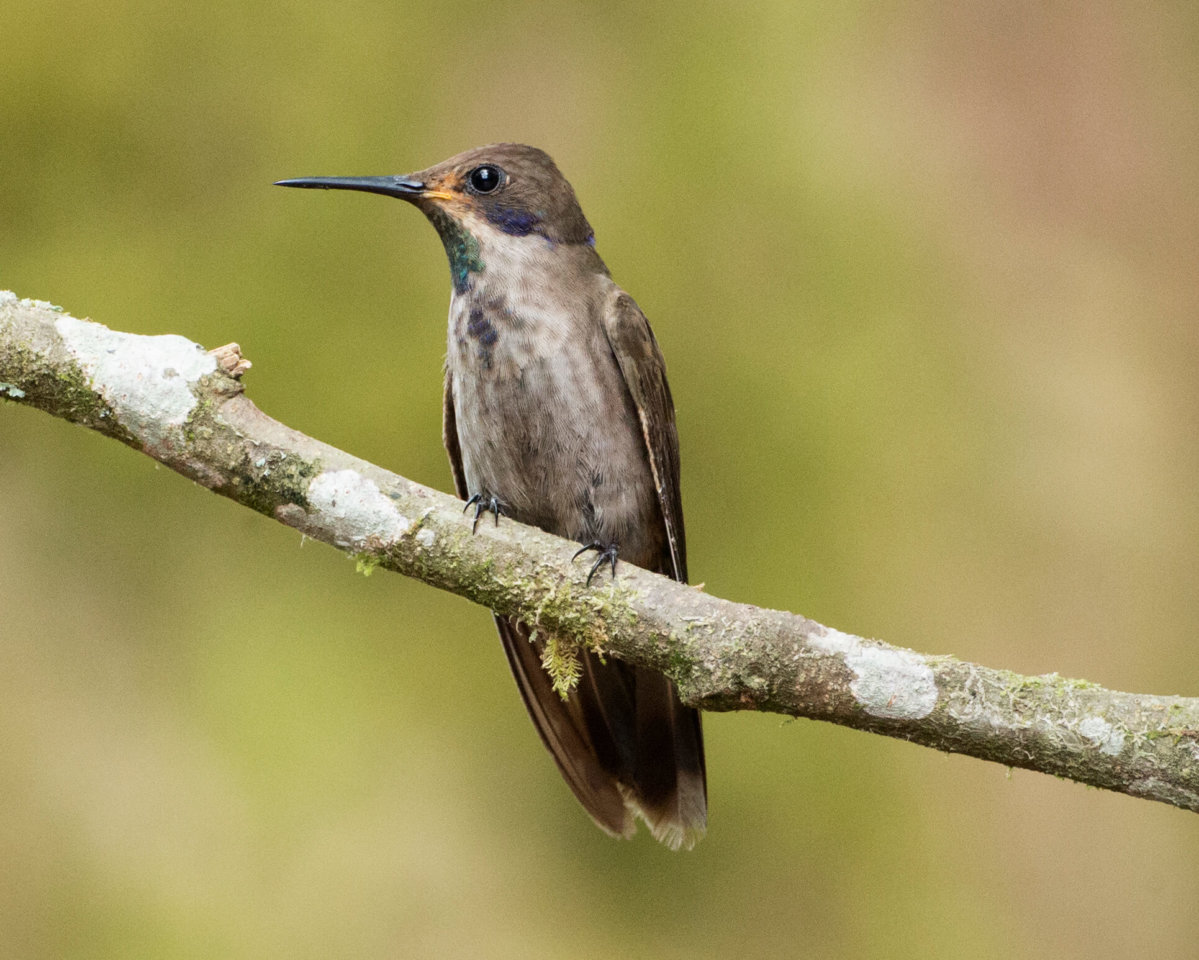
Green Hermit (Phaethornis guy)
The largest of Trinidad and Tobago’s three hermits.
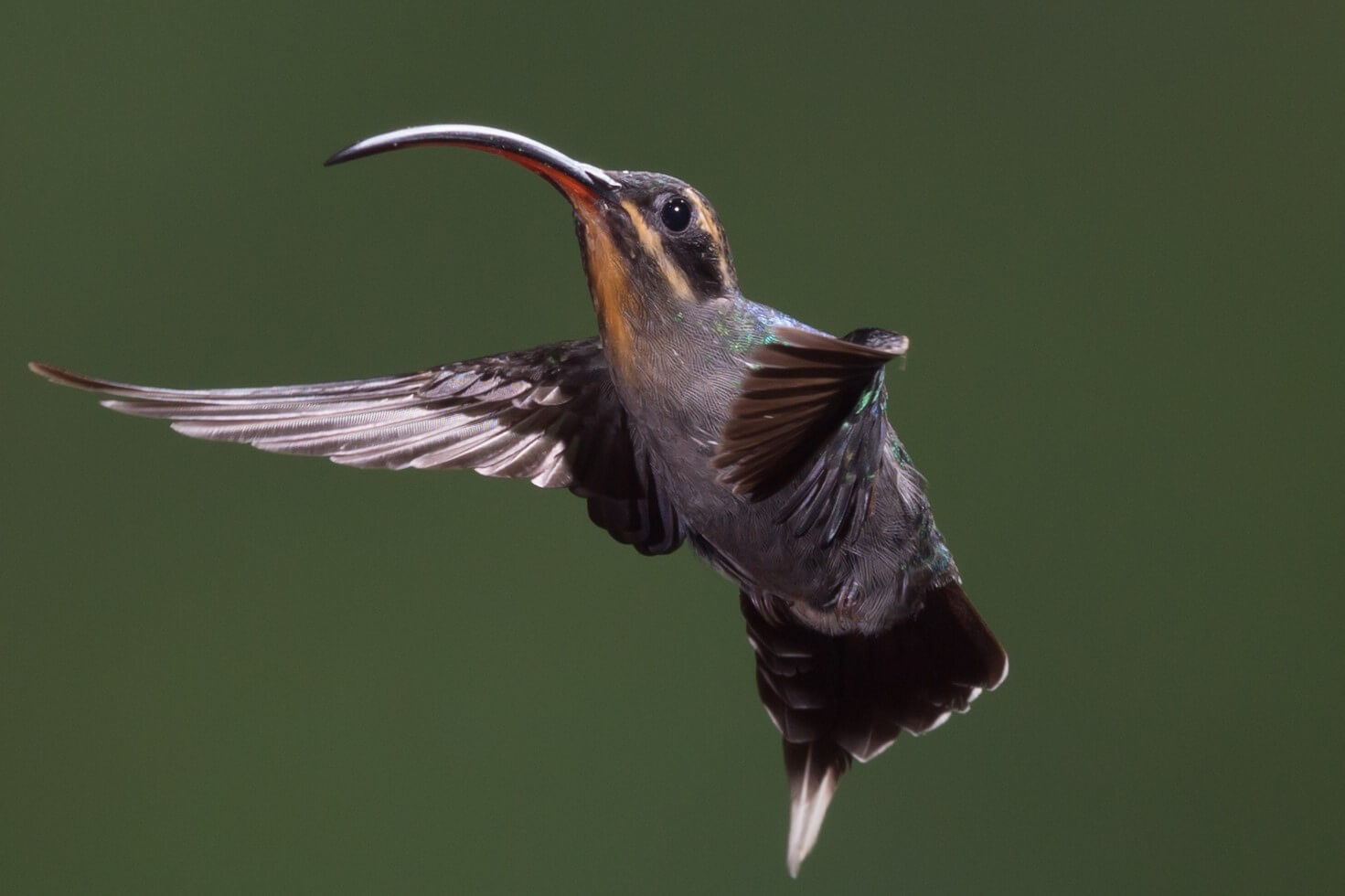
Little Hermit (Phaethornis longuemareus)
The smallest of the three hermits, it is also known as ‘the tadpole bird’ because it moves around in the air like a tadpole. You don’t often see it perched.
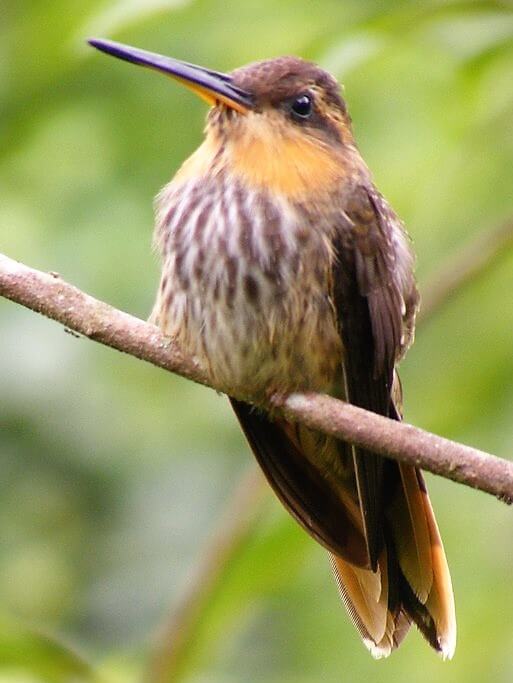
Rufous-breasted Hermit (Glaucis hirsutus)
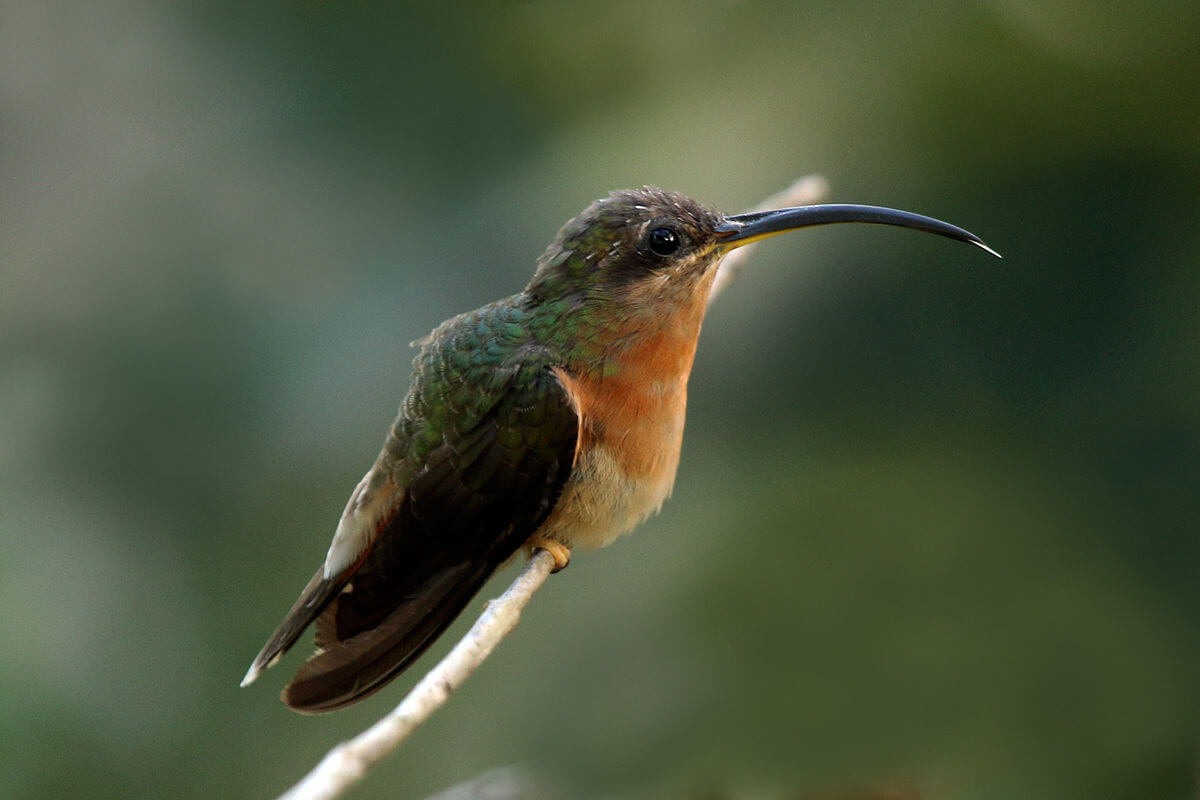
Blue-chinned Sapphire (Chlorestes notatus)
The most iridescent of Trinidad and Tobago’s hummingbirds.
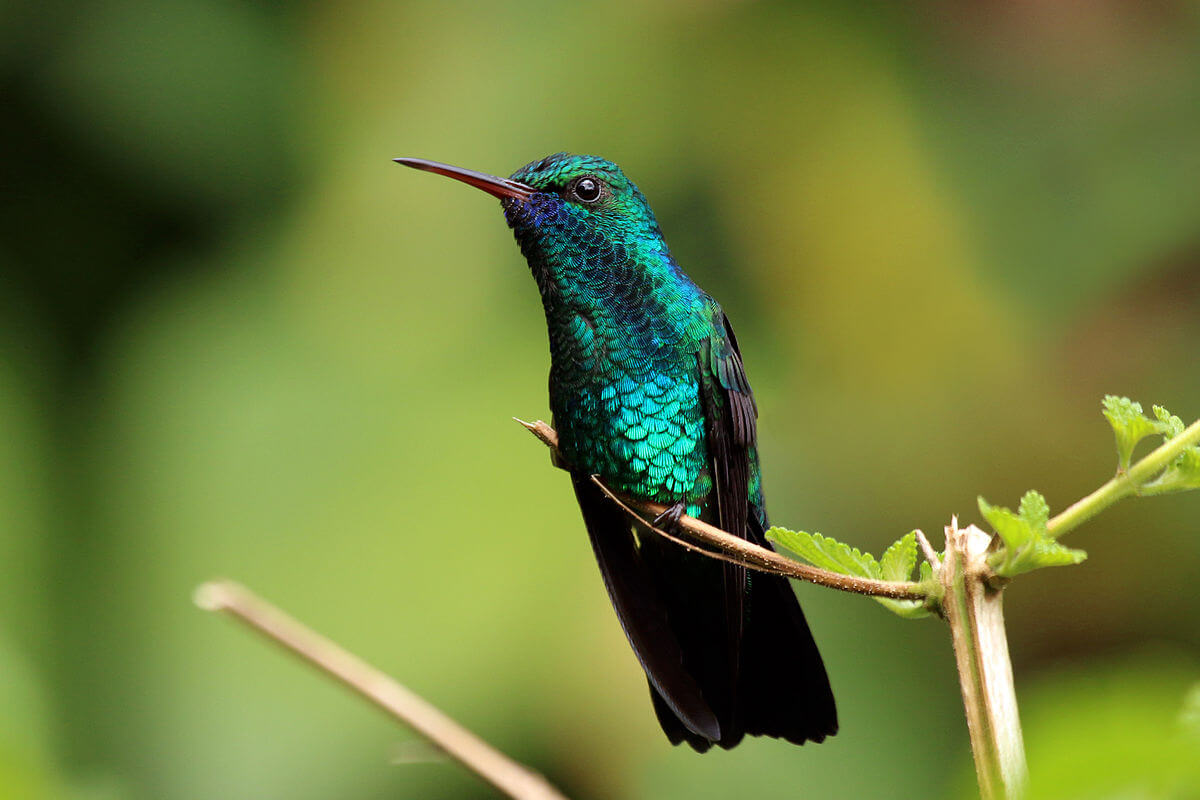
Tufted Coquette (Lophornis ornatus)
The smallest of Trinidad and Tobago’s hummingbirds and considered by many experts to be the second smallest bird in the world – although this is debatable!
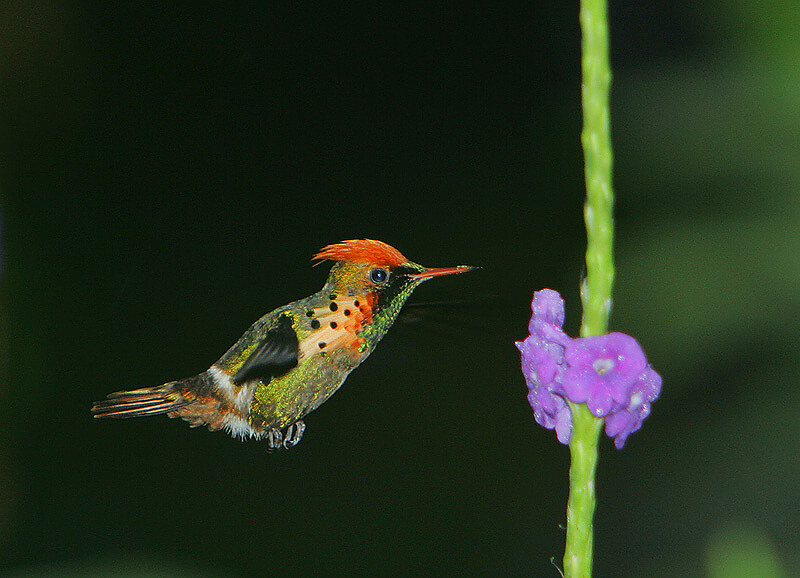
Ruby Topaz (Chrysolampis mosquitus)
This is thought by many to be the most beautiful hummingbird in the world. Together with the Tufted Coquette, it is responsible for bringing many visitors to Trinidad and Tobago. The Ruby Topaz is the only migrant species. It leaves the islands for mainland South America each year between September and November.
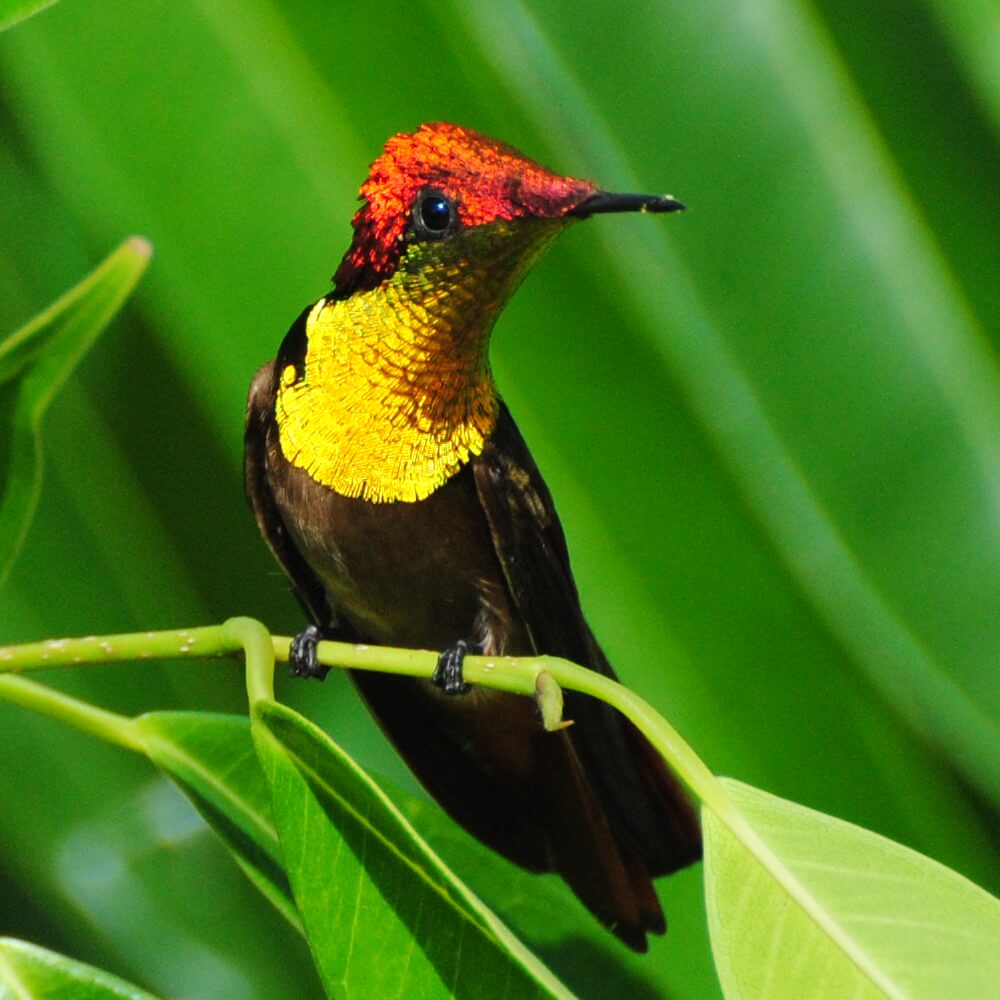
Amethyst Woodstar (Calliphlox amethystina)
This is a new species of hummingbird, found for the first time in the gardens at Yerette in June 2015.
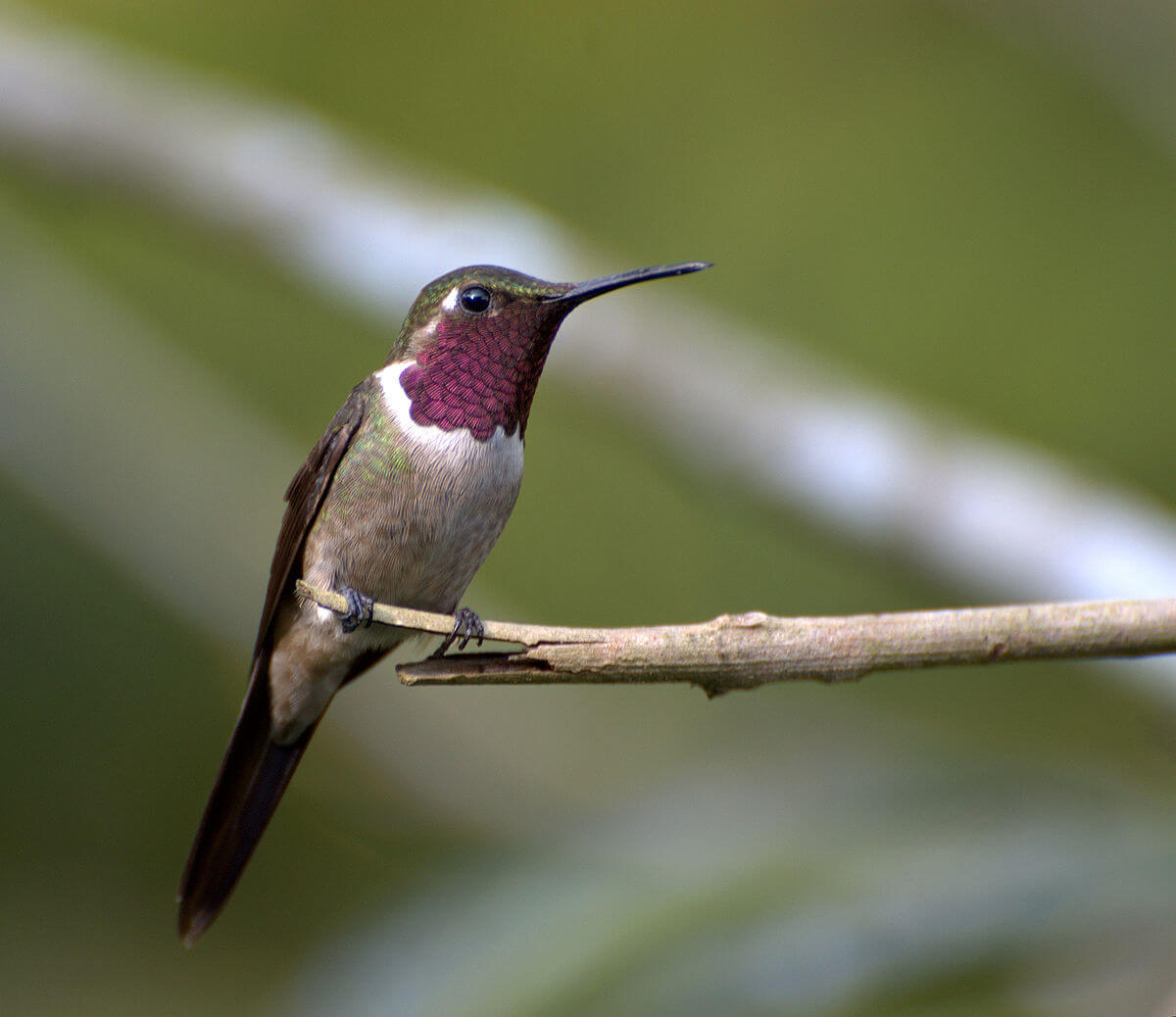
THESE ARE THE 4 SPECIES FOUND ELSEWHERE IN TRINIDAD AND TOBAGO
Blue-tailed Emerald (Chlorostilbon mellisugus)
This species is found mainly in western Trinidad.
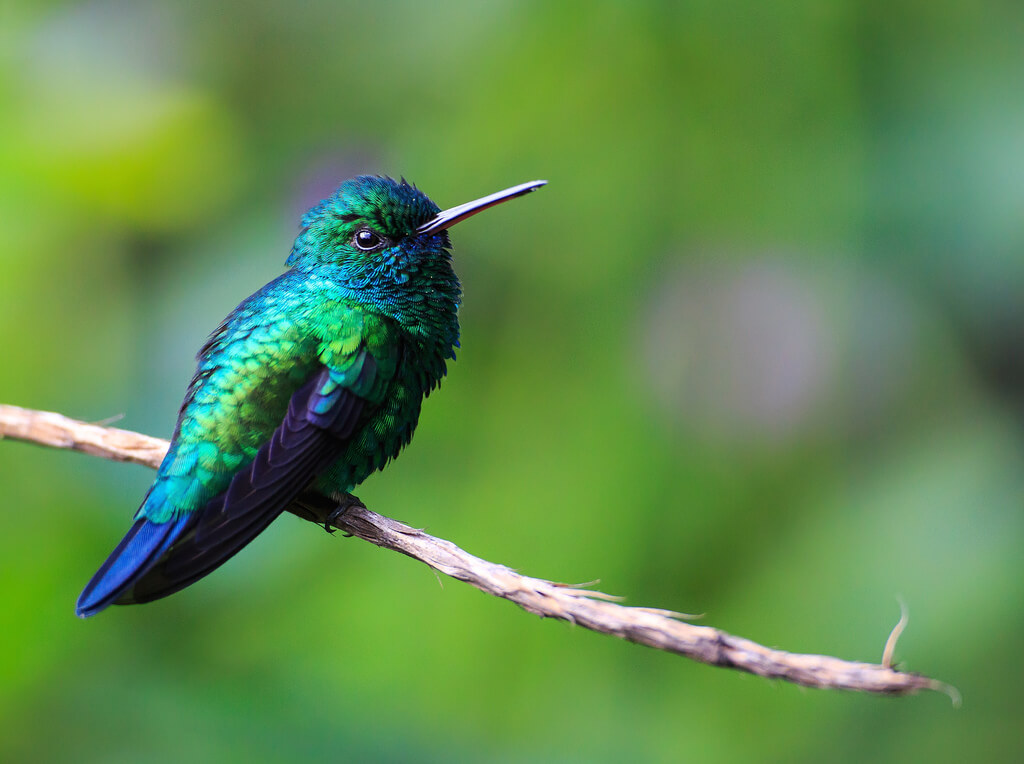
White-tailed Goldenthroat (Polythus guainumbi)
This hummingbird is found mainly in the marshland areas of central and eastern Trinidad.
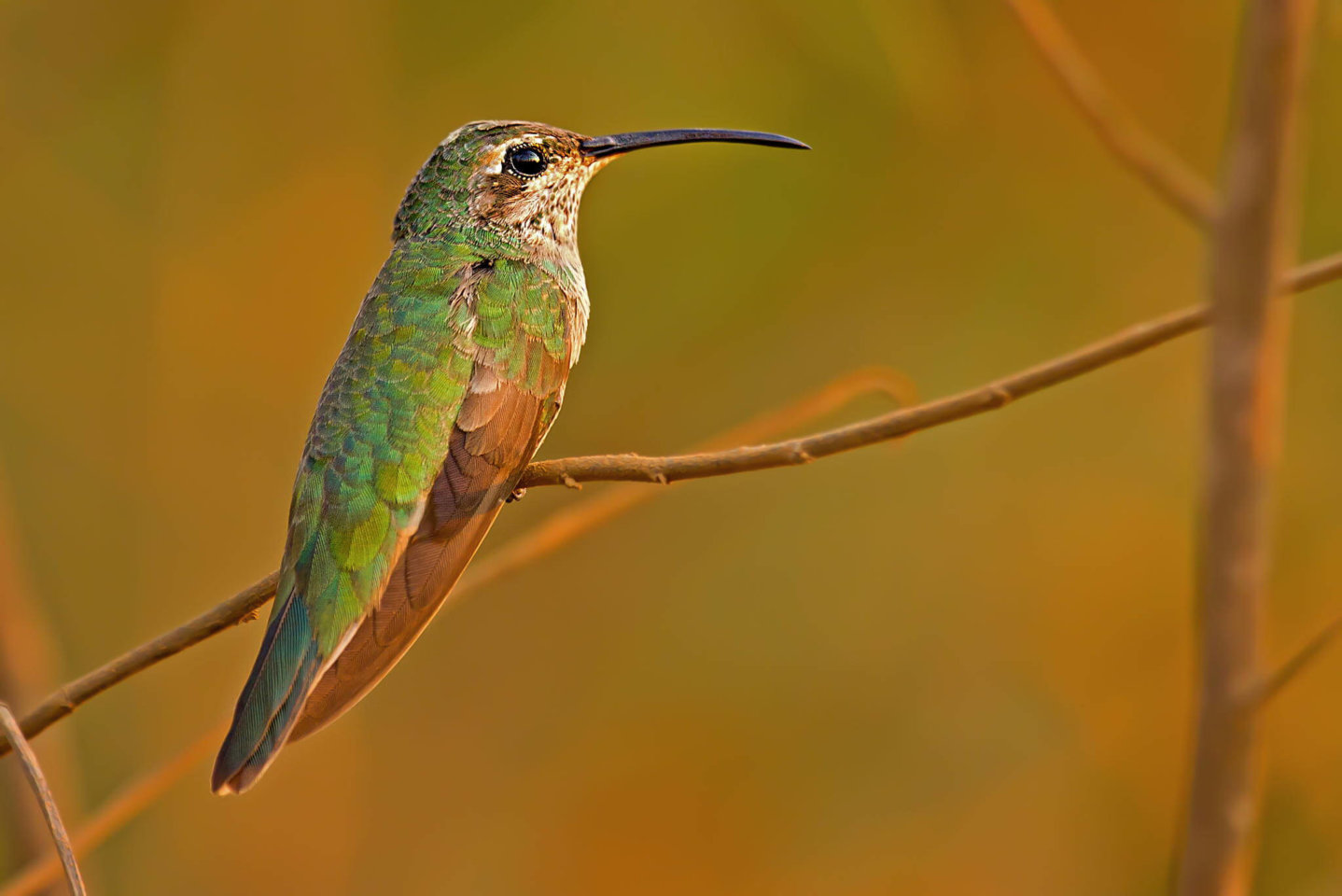
Rufous-shafted Woodstar (Chaetocerus jourdanii)
An extremely rare hummingbird. Theo from Yerette told us that he had only seen this species twice.
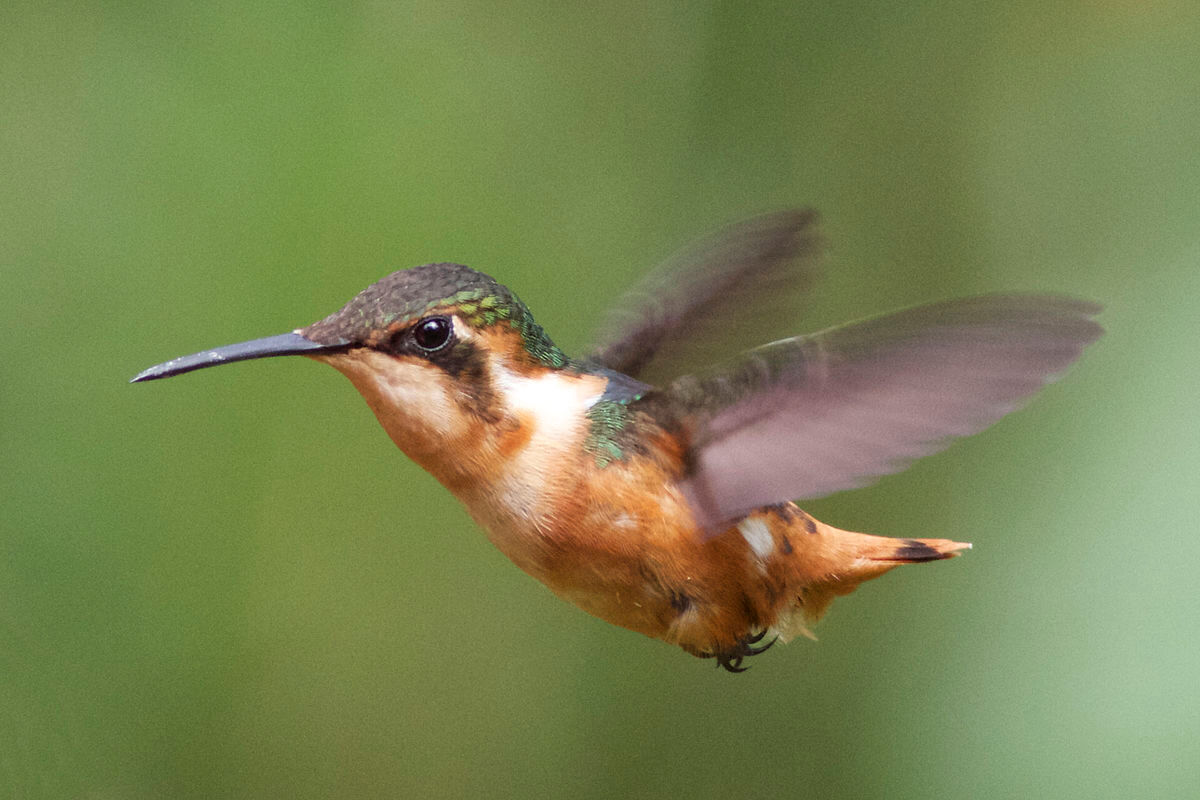
White-tailed Sabrewing (Campylopterus ensipennis)
This species is found only in Tobago, not Trinidad. It is the largest of Trinidad and Tobago’s hummingbirds, weighing as much as 10 grams, compared to those in Trinidad, the heaviest of which is 8.5 grams.
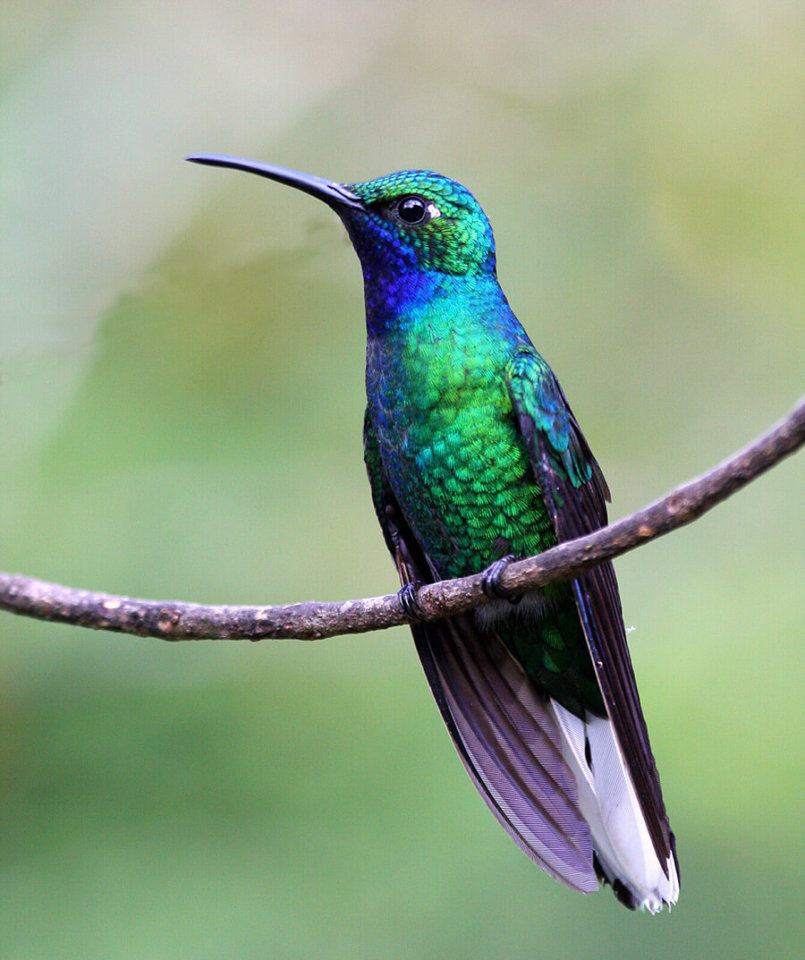
The photographs which are not my own are sourced from Wikimedia Commons.
Read More About Hummingbirds
If you liked this article, Pin It!!
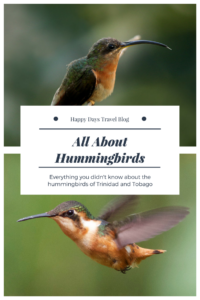
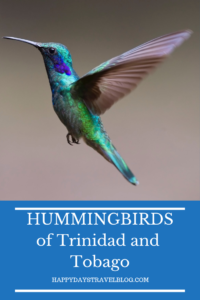
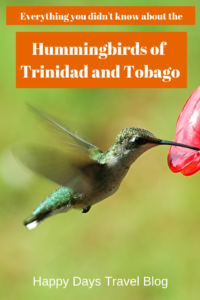
If you’re travelling soon, please use these links!
Are you travelling soon? Use these links when making your bookings. These are the companies we use. It won’t cost you any extra, but we will earn a few pennies to help keep Happy Days Travel Blog going. Thank you!!
- Book your travel insurance with World Nomads (Never leave home without protecting yourself, your trip and your belongings!)
- Book your flight with Skyscanner
- Book your accommodation with Booking.com
- Book a tour with Tour Radar or Intrepid Travel
- Book city tours and activities with Get Your Guide
Disclosure: This post contains affiliate links. If you click through for more information, or to make a purchase, it may result in a small commission coming my way. Please note that there is no extra cost to you associated with this. Thank you so much for supporting my site.
Join our mailing list

Sign up to receive our monthly newsletter. Keep up with what we're doing and be the first to receive special offers and insider tips.

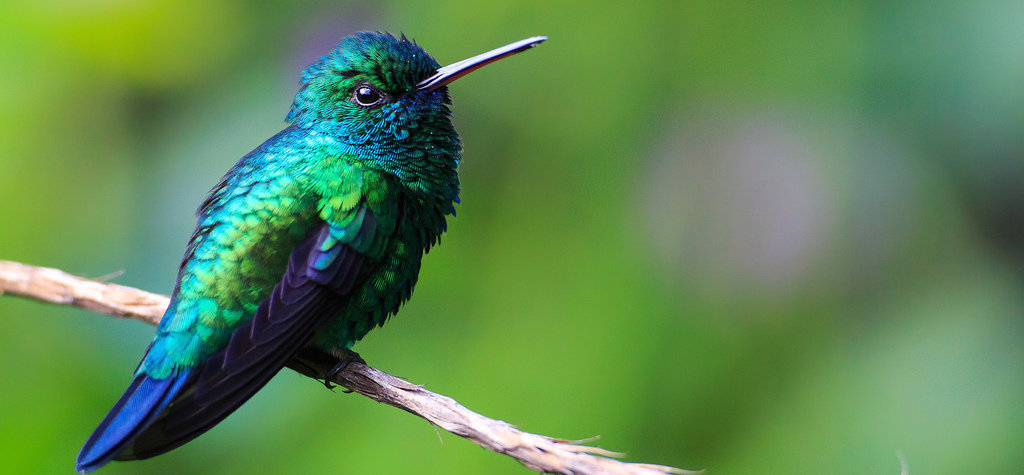





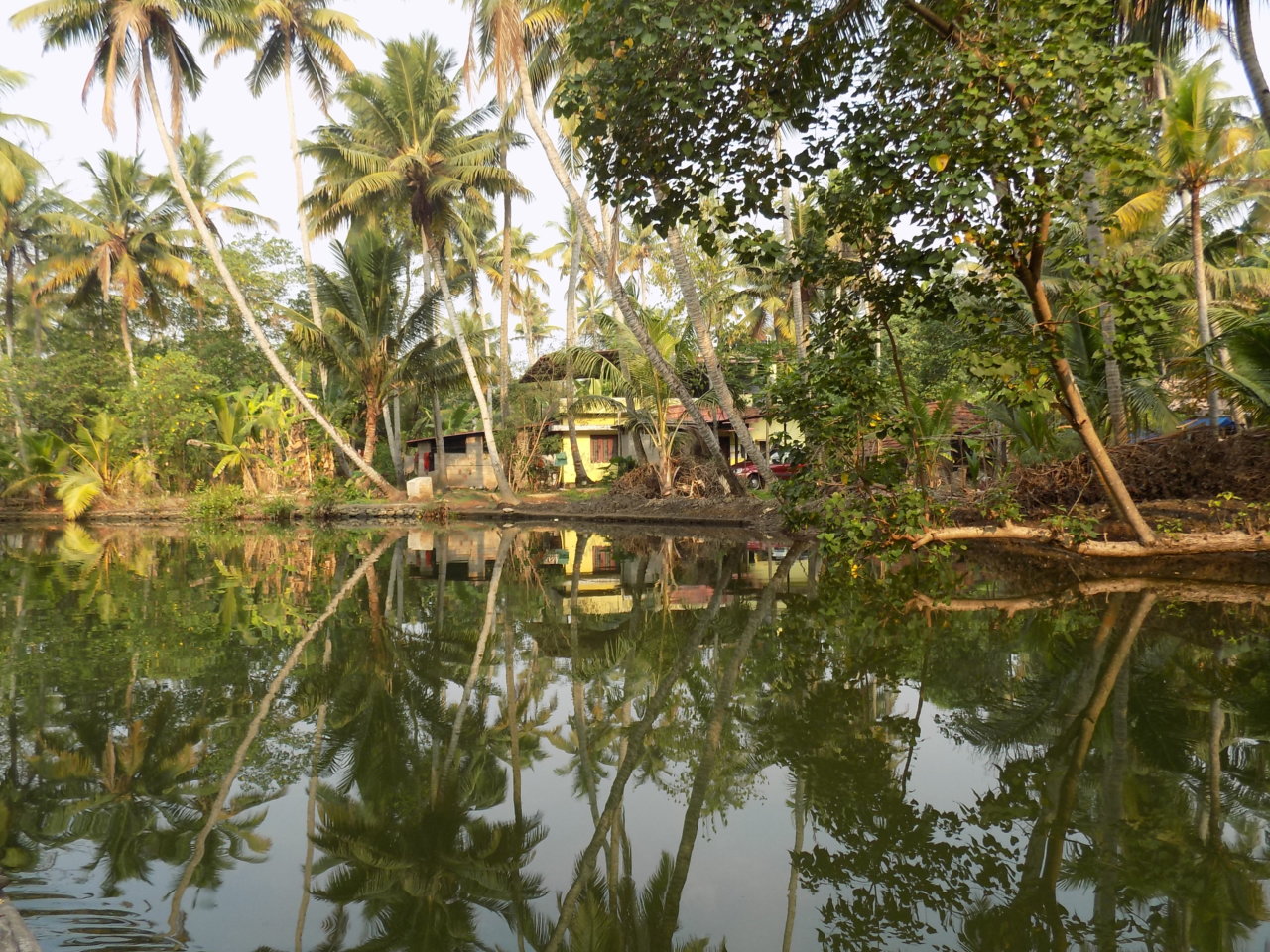





I was watching Planet Earth and there was a bit on humming birds, they are incredible!
Thanks, Michelle -they really are!!
I’ve just had a look at your site – it looks good. I read your posts on Morocco – we’ve got a tour booked for October this year. We’re really looking forward to it!
I love hummingbirds, being from New Zealand we don’t have them so I saw them for the first time last year while I was in Mexico and we had so much fun spotting them but trying to take pics of them is near impossible! Thanks for all the facts, I’ve learnt some new things about these beautiful birds 🙂
Thanks for taking the time to comment, Michelle. I feel privileged to have been able to spend so much time observing these amazing creatures up close. We can’t wait to go back to Tobago next year to see if Mark’s home-made feeders are still working!! 🙂